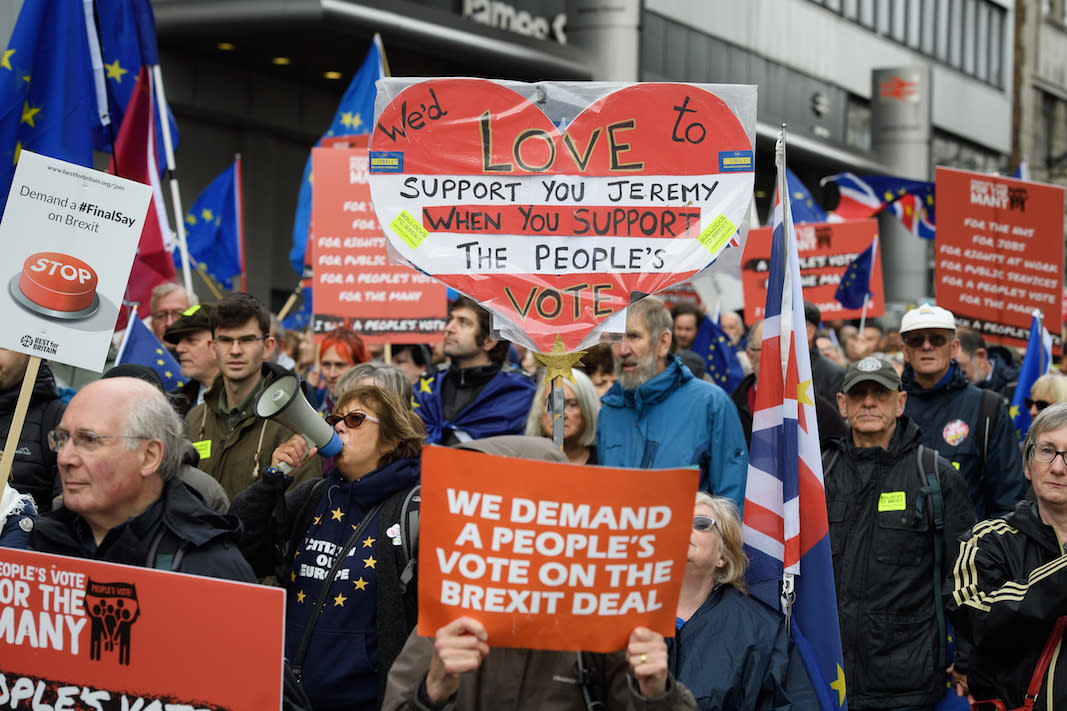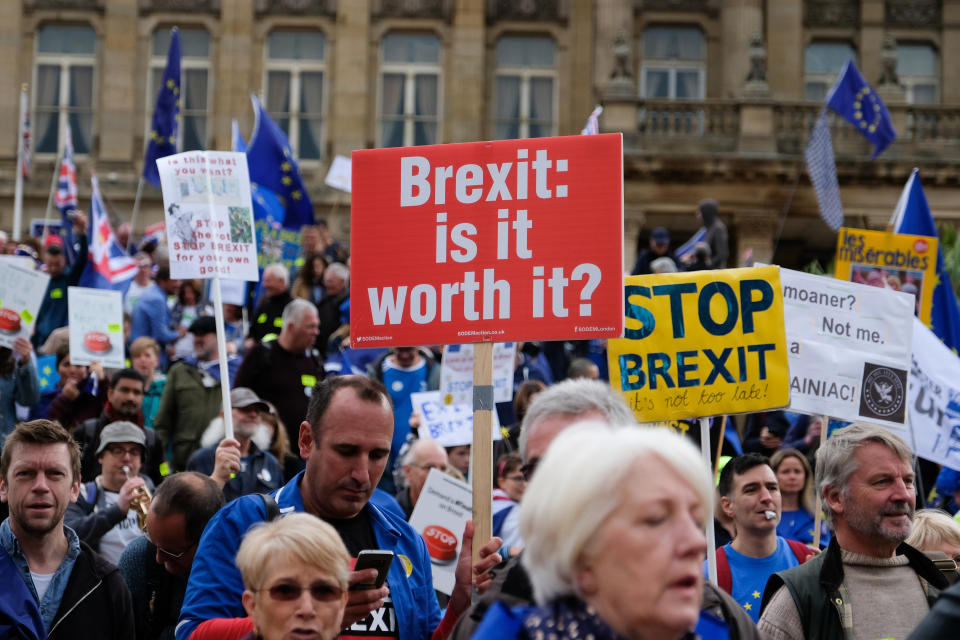Campaigners have almost run out of time to hold a second Brexit vote

Contingency planning for a second Brexit referendum must start immediately in order to avoid running out of time to make a vote possible, a new report has found.
The study by UCL’s Constitution Unit concludes that another public vote is ‘practically possible’, but would take at least 22 weeks to plan.
Considering that this timetable would make it ‘all but impossible’ to hold a vote before the official departure date of 29 March 2019, planning would have to begin straight away and Article 50 would need to be extended, or another vote could not feasibly happen.
Campaigners calling for a ‘People’s Vote’ on any Brexit deal have been gaining prominence in recent weeks, although dispute remains over what the exact terms of the vote would be.
How would a second Brexit vote happen?
A number of processes would need to be completed in order to hold a second referendum:
The Government must pass primary legislation to provide the legal basis for a vote
The Electoral Commission must test the question to make sure it is clear and understandable
Preparation for the administration of holding a poll must be carried out
A regulated period of time for campaigning would need to occur
By looking at previous referendums and considering political uncertainties, researchers concluded that 22 weeks is the minimum amount of time required to plan for the country to return to the polls.

Taking in account MPs’ Christmas break, if the process were to begin today (9 October), the earliest a vote could be held would be 28 March – the day before Brexit.
The report states that another vote the day before exit would not be possible and so Article 50 would need to be extended – a process that is ‘certainly legally possible’.
What would the question be?
There are three viable questions that could be put to the public, the report finds:
If Theresa May fails to reach a deal, a binary choice between ‘remain’ and ‘no deal’
If a deal is agreed, a binary choice between ‘Theresa May’s deal’ and ‘remain’
If a deal is agreed, a three-option vote on ‘no deal’, ‘remain’ and ‘Theresa May’s deal’
Calls for a second vote have been strengthening in recent weeks as ministers scramble to agree a deal before time runs out.
Details emerged last week of a new Irish border ‘backstop’ proposal from the PM that could see the whole of the UK stay in a temporary customs union with the EU until a trade agreement can be reached that would not require a hard border between Ireland and Northern Ireland.
DUP leader Arlene Foster used a visit to Brussels today to set out her own series of ‘red lines’ for the agreement that Mrs May must meet in order to guarantee the support of Foster’s party.
The DUP insists that no new barriers to trade between Northern Ireland and the rest of the UK can result from any agreement.

 Yahoo News
Yahoo News 

